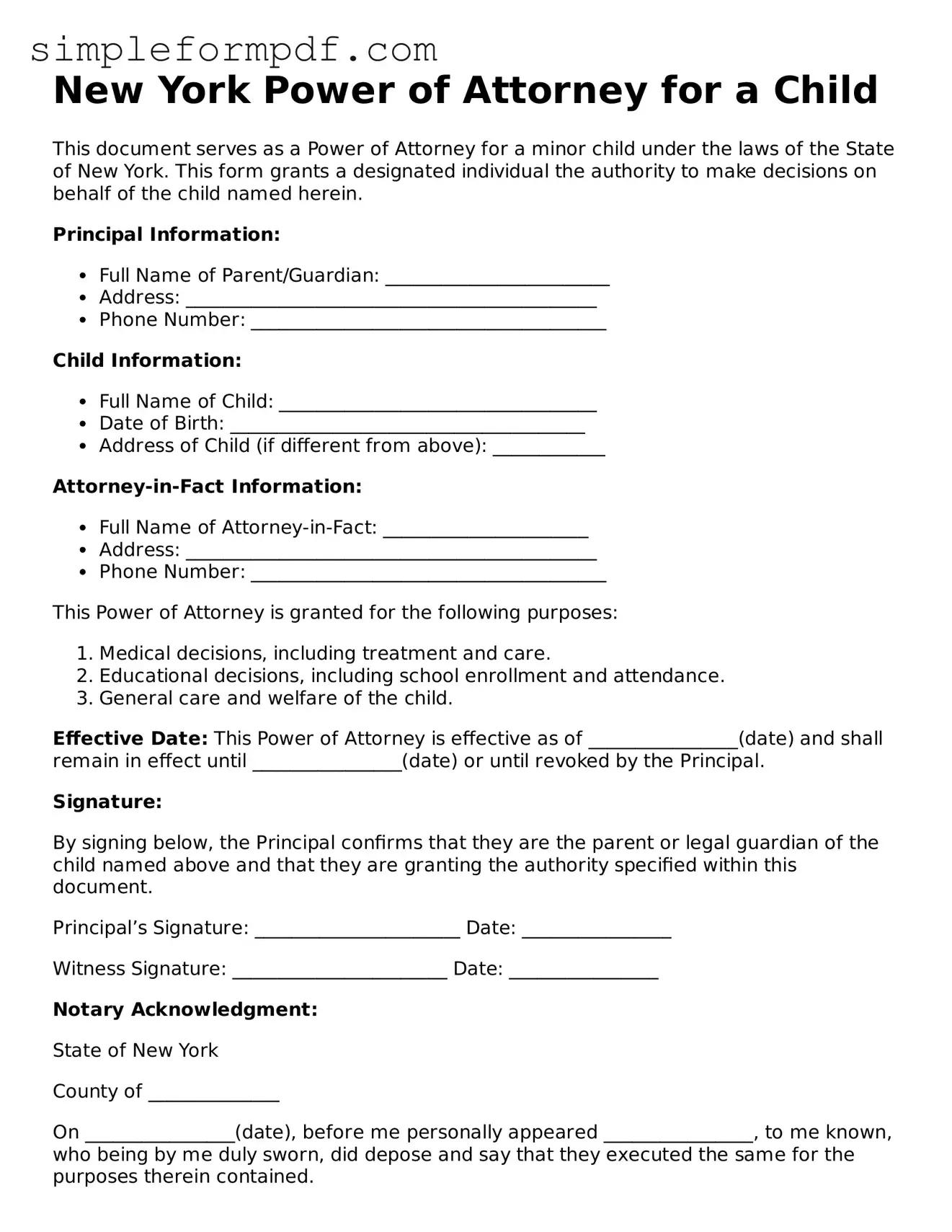New York Power of Attorney for a Child
This document serves as a Power of Attorney for a minor child under the laws of the State of New York. This form grants a designated individual the authority to make decisions on behalf of the child named herein.
Principal Information:
- Full Name of Parent/Guardian: ________________________
- Address: ____________________________________________
- Phone Number: ______________________________________
Child Information:
- Full Name of Child: __________________________________
- Date of Birth: ______________________________________
- Address of Child (if different from above): ____________
Attorney-in-Fact Information:
- Full Name of Attorney-in-Fact: ______________________
- Address: ____________________________________________
- Phone Number: ______________________________________
This Power of Attorney is granted for the following purposes:
- Medical decisions, including treatment and care.
- Educational decisions, including school enrollment and attendance.
- General care and welfare of the child.
Effective Date: This Power of Attorney is effective as of ________________(date) and shall remain in effect until ________________(date) or until revoked by the Principal.
Signature:
By signing below, the Principal confirms that they are the parent or legal guardian of the child named above and that they are granting the authority specified within this document.
Principal’s Signature: ______________________ Date: ________________
Witness Signature: _______________________ Date: ________________
Notary Acknowledgment:
State of New York
County of ______________
On ________________(date), before me personally appeared ________________, to me known, who being by me duly sworn, did depose and say that they executed the same for the purposes therein contained.
Notary Public: ________________________
